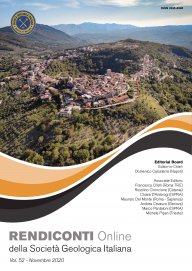
The Cimaganda Rockslide (Italian Alps): geomechanical characterization and hydro-mechanical numerical modelling
Andrea Morcioni (1), Greta Bajni (1) & Tiziana Apuani (1)
(1) Department of Earth Sciences "A. Desio", Università degli Studi di Milano, Via Mangiagalli, 34, 20133, Milan, Italy.
Corresponding author e-mail: andrea.morcioni@unimi.it
Volume: 52/2020
Pages: 40-46
Abstract
San Giacomo Valley (Sondrio, Italy) as many alpine areas, is quite frequently affected by rock slope landslides at different scales. This work deals with the study of the Cimaganda rockslide, occurred in September 2012 after four days of persistent rainfall. It involved a volume of about 20.000 m3 of massive crystalline rock, blocking the main road (SS36) and isolating the upper Valley for a few days. The event developed at the right flank of the historical Cimaganda rock-avalanche, which had mobilized some Mm3 of rock, irreversibly changing the morphology of the valley. Using field and laboratory analysis followed by stress-strain numerical modelling, this work develops a solid conceptual geomechanical model of the area and the back-analysis of the 2012 event, exploring instability-forecasting scenarios.
Keywords
Get Full Text